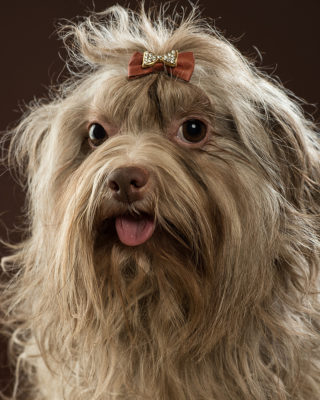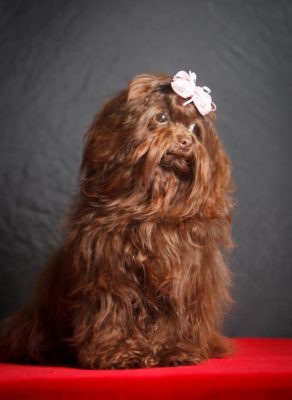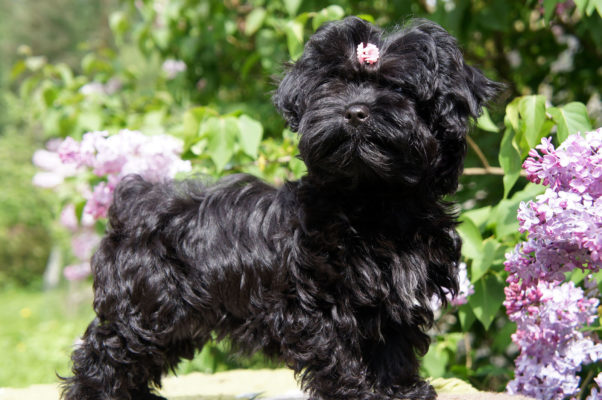Bolonka
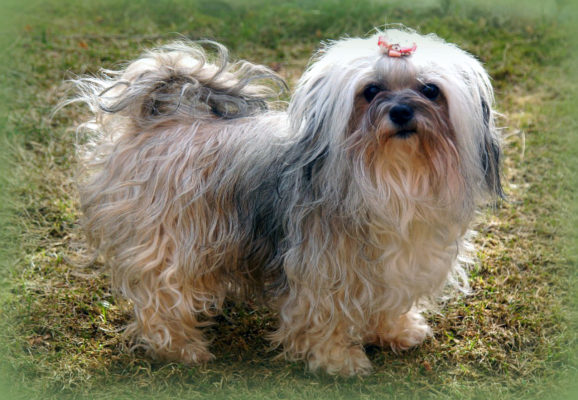
The playful animal easily gets along with people. He quickly finds contact with the owner and loves children. Suitable for large families and single people. Despite its small size, the dog has plenty of energy. It can keep company for a long walk or a hike. Representatives of the breed are quite intelligent. Lack of aggression and gentle training will quickly teach the pet basic commands and tricks.
Table of Contents
Breed Information
| Another Name | Russian Lapdog, Bolonka Zwetna, Franzuskaya Bolonka, Russian Tsvetnaya Bolonka |
| Origin | Russia |
| Height | Males 20-26 cm Females 20-24 cm |
| Weight | 3-4 kg |
| Fur | Long |
| Color | Anything but white, marbled and spotted |
| Lifespan | 12-16 years |
| FCI Classification | Breeds outside the FCI classification |
| Group | Small breed or decorative dogs, dogs for the apartment |
| Price | From $250 to $1100 |
Breed Photos
Origin History
The history of Bolonka began in Leningrad after World War II. Representatives of ornamental breeds after the revolution caused disgust. All because they reminded of the hated aristocratism. But in the middle of the twentieth century, the situation changed. Most people in the Soviet Union lived in small communal houses. Miniature, colorful Bolonka fit perfectly in small rooms and required little care and nourishment, such as sheepdogs.
In 1951, breeders introduced the first specimens of Bolonkas. The ancestors of the breed are considered to be ornamental mixed dogs. They were brought from all parts of the USSR to Leningrad and then crossed with each other. Dog breeders claim that Shih Tzu, Maltese, and Lhasa Apso flows in the animals. The breed was officially standardized in 1966. Until the 1970s, most Bolonkas lived in Leningrad. Only a tiny portion of the representatives lived in the homes of Moscow citizens. When the capitals switched places, the demand for ornamental dogs increased in Moscow. Breeders took advantage of the moment and opened several kennels of Bolonkas.
In 1999 the National Club of the breed was established. Dogs became popular again in St. Petersburg. Large mono-breed kennels were registered in the city. Animals were sold not only inside the country but also to Canada, USA, Sweden, Norway, Finland.
Appearance
The pet’s cute appearance is attractive at first sight: curly coat, cherry eyes, and well-built small body. A rounded head with relief cheekbones. Broad jaw with scissor bite. A tight and pinched jaw is also acceptable. Teeth are white, tightly spaced. The absence of canines and/or incisors is recognized as a defect. A small nose with wide nostrils. Triangular-shaped ears are hanging down.
The legs are placed parallel to each other and set wide. The rounded tail is covered with abundant hair. The tip is in contact with the body. If the Soviet standard of the breed provided exclusively curly hair, wavy hair is officially allowed in modern representatives. The coat is long, evenly distributed over the body. Bolonkas are formally recognized in any color except black, marbled, and spotted.
Character
The playful animal easily gets along with people. He quickly finds contact with the owner and loves children. Suitable for large families and single people. Despite its small size, the dog has plenty of energy. It can keep company for a long walk or a hike. Representatives of the breed are quite intelligent. Lack of aggression and gentle training will quickly teach the pet basic commands and tricks.
Bolonka’s do not like loneliness. They need close and regular communication. The animal senses the mood of the owner. If you need peace, he won’t bother with petting. But if you leave your pet neglected for a long time, he may become ill. Psychosomatics is to blame.
Care
When buying a small puppy, prepare the house. Hide wires, place vases high up, put away the litter box. It is a temporary measure because of an innate interest in exploring space. When the pet is older, things will return to normal.
The coat of colored Bolonka is cleaned naturally. Wash only as needed. If the pet is intended solely for the home, it is better not to use cosmetic products. Rinse the dog with chamomile or nettle decoction. Hair drying with a hairdryer is not necessary. It is enough to wrap the dog in a terry towel.
Comb your dog’s hair two to four times a week. But do not use a metal comb. A plastic comb with sparse teeth will do. It is not necessary to cut Bolonkas. But it is recommended to trim the abundant hair in the anus and on the paws. If the hair on the head has reached eight centimeters, take the hair into a ponytail. It will not irritate the mucous membranes of the eyes.
Training
Learning complex commands and skills is not necessary. But from an early age, it is worth doing education. The pet should have its place to sleep and know basic commands. Understand that you should not chew the furniture, tear off the wallpaper or go to the toilet in any place. Babies are fragile and should not be handled aggressively. Walk daily in the fresh air. Get some exercise or go for a run together.
Common Diseases
Despite their small size, Bolonkas are dogs with strong immunity. The breed has inherited possible genetic diseases from the Havana Bichons:
- cataract;
- loss of the third eyelid;
- hip dysplasia;
- skin diseases;
- dislocation of the kneecap;
- cardiomyopathy;
- hypothyroidism;
- deafness.
Nutrition
Representatives of the breed have a good appetite. At the same time, they are undemanding in food. You can make a natural diet or choose a dry food super-premium or holistic class. Bolonkas love hard cheese, lean meat, fillet of sea fish, buckwheat, and rice. Be careful with chicken – it can cause allergic reactions. The basis of the diet should be animal protein. Do not forget about vegetables, greens, and fruits. Once a week, you can spoil your pet with nonfat kefir or quail eggs. Avoid baked goods, spicy foods, sweets, smoked foods, potatoes, beans, onions, and garlic.
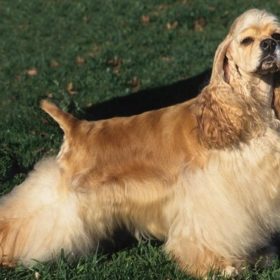 American Cocker Spaniel
American Cocker Spaniel Brittany
Brittany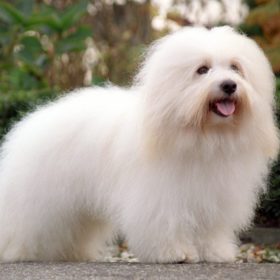 Coton de Tuléar
Coton de Tuléar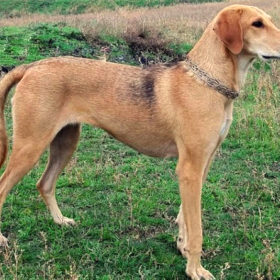 Russian Piebald Hound
Russian Piebald Hound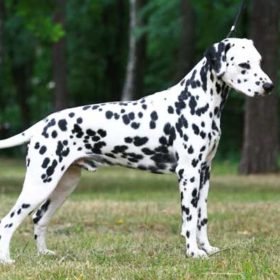 Dalmatian
Dalmatian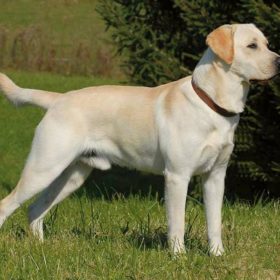 Labrador Retriever
Labrador Retriever